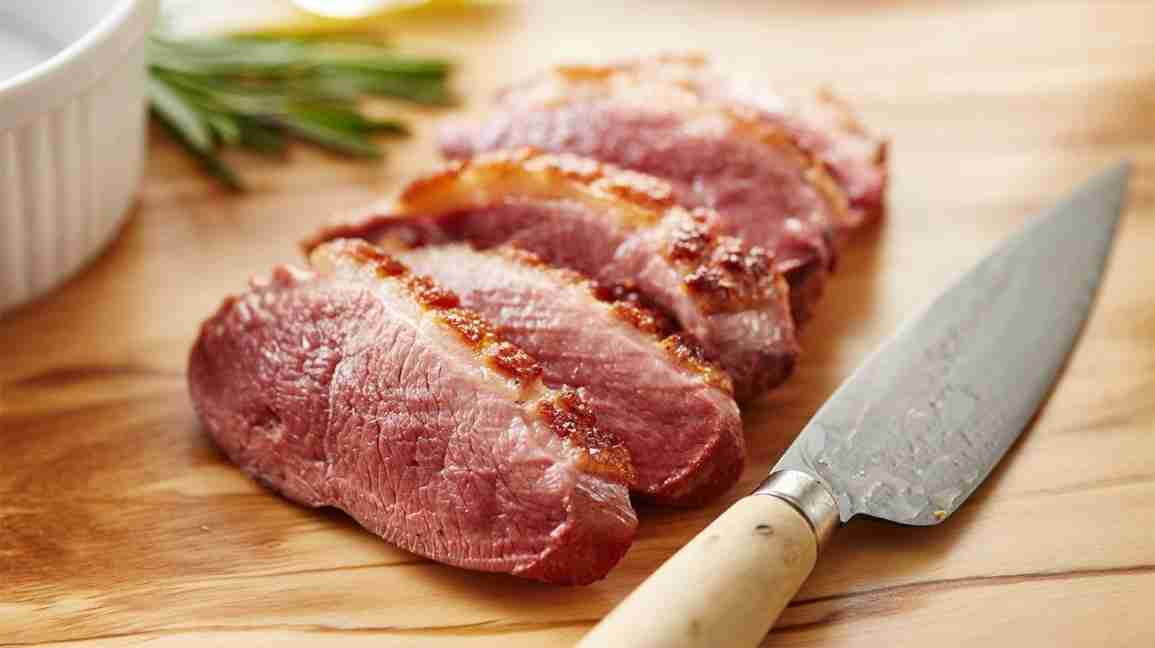Duck meat is consumed all over the world and particularly popular in China.
It’s a rich source of protein and provides several vitamins and minerals. Still, there’s some confusion about whether duck is considered red or white meat.
This article discusses the differences between red and white meat and how duck is classified.
Red meat is considered to have more myoglobin than white meat.
Myoglobin is a protein found in the muscle tissue of mammals that attaches to oxygen. When it binds to oxygen, it becomes red, thus contributing a red color to meat (
The higher myoglobin content in meats like beef or lamb is why they’re considered red meats. On the other hand, chicken does not contain as much myoglobin, and therefore, is classified as white meat.
That said, other factors can affect the color of meat. Meat from older animals, as well as meat that has been exposed to oxygen and not stored in vacuum packaging, tends to be darker (2).
Finally, cuts of meat from muscles that use more oxygen may also be redder in color. This is why chicken thighs and legs are darker than breasts (3).
SummaryRed and white meats differ in their content of myoglobin, a protein in muscle that binds to oxygen and is red in color. Meat from muscles that use more oxygen is redder.
According to the United States Department of Agriculture (USDA), duck meat is classified as white (3).
Poultry, which includes two-legged animals like chickens, turkeys, and ducks, is considered white meat. Livestock, such as four-legged cows, pigs, and lambs, is scientifically classified as red meat.
Still, even though duck meat is grouped into the same category as chicken and turkey, it tends to have more myoglobin and a darker color.
This is because ducks may fly and engage their breast muscles, whereas chicken and turkeys don’t fly (3).
Thus, duck meat is darker in color than chicken or turkey breasts and more comparable to their thighs or legs. Yet, it’s usually not as dark as beef or lamb.
In other words, duck meat may be “dark,” but it’s not scientifically classified as “red” meat.
SummarySince duck is classified as poultry, it’s scientifically considered a white meat. However, it has a darker color than most cuts of chicken and turkey meat, as ducks use certain muscles more.
According to culinary tradition, meat that remains dark when cooked is considered red meat.
In this sense, duck may be considered red meat in the kitchen. In fact, similarly to beef, duck is often prepared medium rare and served slightly pink on the inside at restaurants.
Also, due to its higher fat content, duck is usually more flavorful than chicken and turkey.
However, it’s important to note that the USDA recommends cooking duck to the same internal temperature as chicken — 165°F (74°C) (3).
Duck that’s fully cooked usually has a lighter color.
Since the culinary classification of duck is not based in science and depends on its color during cooking and serving, not everyone may classify it as a red meat in the culinary sense.
Regardless, duck is packed with nutrients. One skinless breast (95 grams) provides 22 grams of protein and only 190 calories, along with several vitamins and minerals (
Although it’s higher in fat than a chicken breast, it’s still a nutritious protein source that can be incorporated into a healthy diet in moderation (
SummaryDuck may be considered red meat in the kitchen, as it’s often served medium rare and remains dark during cooking. However, the culinary classification of duck is not always consistent.
Duck is scientifically considered a white meat due to its myoglobin content and classification as poultry.
Still, it’s typically darker in color than most parts of chicken and turkey and often cooked differently. Therefore, duck may be considered a red meat by culinary standards.
Regardless of its classification as a white or red meat, duck is a healthy meat option that can be included in a balanced diet.







